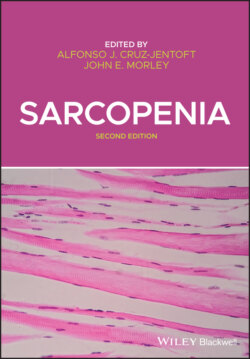Читать книгу Sarcopenia - Группа авторов - Страница 34
Decline of physical activity with aging
ОглавлениеIt is generally acknowledged that a substantial portion of the decline of mitochondrial function with aging is attributable to the decline of physical activity, observed even in very healthy aging individuals [32]. The level of physical activity is by far the strongest predictor of muscle function with aging and has been linked with the preservation of mitochondrial function. Indeed, the discovery proteomic studies conducted on muscle biopsies from healthy individuals have found a strong association between the levels of self‐reported physical activity and increased representation of all mitochondrial proteins, both structural and functional [33]. A reduced physical activity, however, does not exhaustively explain the decline of mitochondrial function, since skeletal muscle oxidative capacity declines even after the effect of age is estimated after adjusting for physical activity [23, 26]. Although observational studies assessing changes of mitochondrial function with aging in individuals who maintain a high level of physical activity are lacking, randomized clinical trials have shown that regular physical activity and resistance exercise prevent age‐related sarcopenia [34–36]. The beneficial effect of physical activity on mitochondrial function is mostly mediated by mitochondrial biogenesis, driven by the upregulation of the peroxisome proliferator‐activated receptor γ coactivator‐1 α (PGC‐1α), [37, 38]. PGC‐1α modulates the biological activity of several transcription factors including the nuclear respiratory factors (NRF1 and NRF2) and mitochondrial transcription factors (TFAM and TF2B) [39], and its concentration in skeletal muscle has been associated with the degree of oxidative capacity and shown to decline with aging [29]. PGC‐1α also inhibits the Forkhead box O3a (FoxO3a) and nuclear factor κB (NF‐κB), both of which enhance muscle catabolism [40, 41]. In mice, the overexpression of PGC‐1α levels in skeletal muscle prevents age‐dependent sarcopenia [42]. Thus, increasing mitochondrial biogenesis or enhanced quality control processes by exercise or exercise mimetics is considered one of the possible strategies for sarcopenia prevention.
